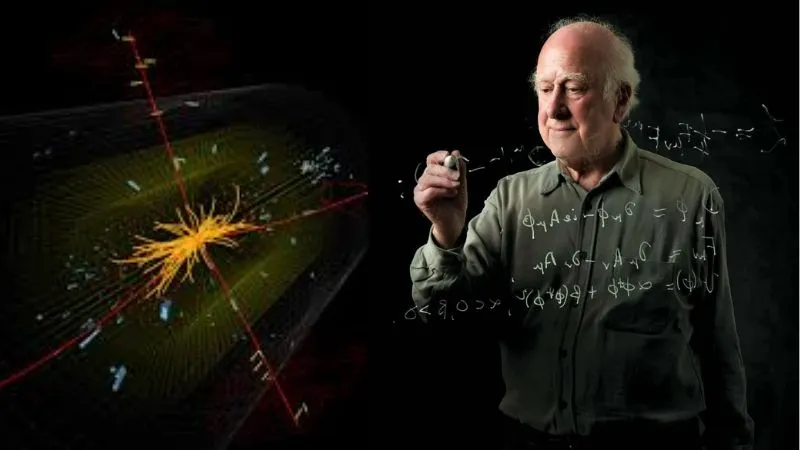Nobel Prize winner Peter Higgs, known for proposing a theoretical particle to explain the mass of other particles, has passed away at the age of 94. However, his legacy continues on his revolutionary discovery of the ‘god particle’, Higgs-Boson. Higgs shared his Nobel prize with Belgian physicist Francois Englert for proposing the existence of what became known as the Higgs boson particle and the invisible field in space that gives mass to matter. First theorized in 1964, it was discovered in 2012 by the Large Hadron Collider at CERN Laboratory in Switzerland. It is reportedly a particle smaller than an atom, and is extremely unstable, causing it to ‘decay’ very quickly. Read on to know more about it:
What is the Higgs-Boson Particle?
Peter Higgs gave the theory about this particle in 1964. The Higgs boson is the fundamental particle associated with the Higgs field, a field that gives mass to other fundamental particles such as electrons and quarks. Everything we see in the universe - planets, stars, life and so on is made of this particle and given mass by the Higgs field. The mass of the God particle is 125 billion electron volts (eV), which is 130 times more than that of a sub-atomic particle like a proton. The name boson in Higgs boson is given after the Indian physicist Satyendra Nath Bose.
The ‘God particle’s’ internal structure is currently unknown. No one even knows how it is made. But this particle can be fundamentally called the DNA of the universe. According to particle physics, quark, lepton and gauge boson are fundamental particles.
Leon Lederman, who won the Nobel Prize along with Peter Higgs, named this particle the “Goddamn Particle” in his book because it was very difficult to find out about it. Later the publishers of the book changed its name to 'The God Particle'.
The discovery of the elemental particle was announced in 2012 by European nuclear research body CERN after the boson was detected in the Large Hadron Collider, an underground laboratory near Geneva that smashes protons together at almost the speed of light and records data on their interaction.
More about Peter Higgs:
Peter Ware Higgs was born on May 29, 1929 in the Elswick district of Newcastle upon Tyne, England He was a British theoretical physicist, professor at the University of Edinburgh, and Nobel laureate in Physics for his work on the mass of subatomic particles. The ‘father of the Higgs boson’ was as modest in the limelight as his simple lifestyle suggested: He lived in a small flat in Edinburgh, had no television and used public transport, according to the UK’s Telegraph newspaper.
Higgs, who suffered from asthma and was partly schooled at home by his mother, lived in Birmingham and Bristol, where he attended Cotham Grammar School until 1946 and developed an interest in the work of physicist Paul Dirac. He graduated with first-class honors in physics from King’s College, University of London, in 1950, and completed a master’s and a doctorate on molecular vibrations.
In 1980, Higgs became a professor of theoretical physics at the University of Edinburgh after serving as a lecturer in Mathematical Physics for 20 years. He held the post of professor for 16 years. He died on April 8 at his home, according to the University of Edinburgh, where he was professor emeritus.
